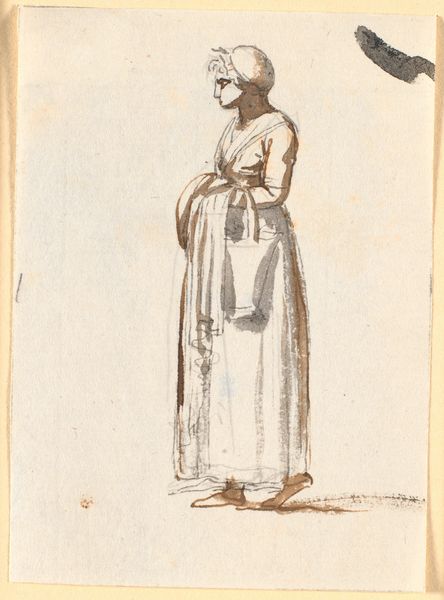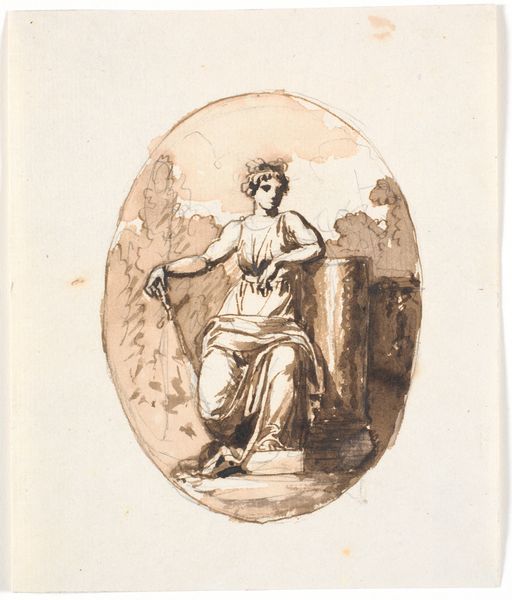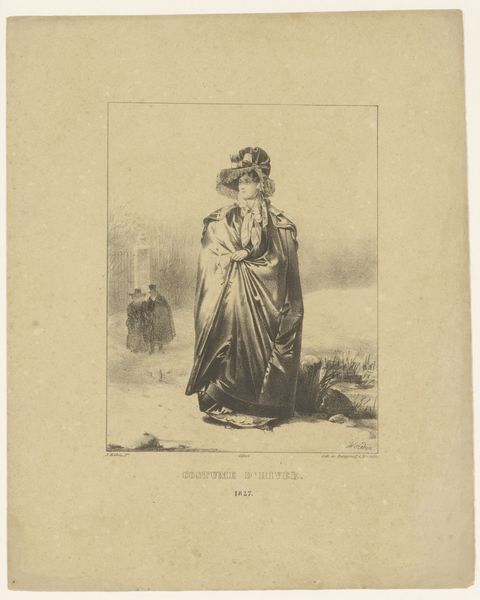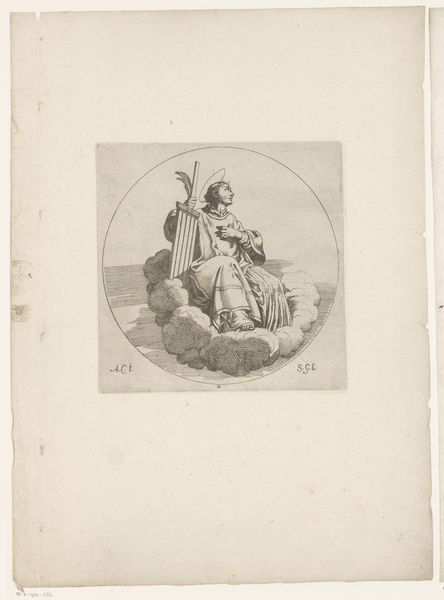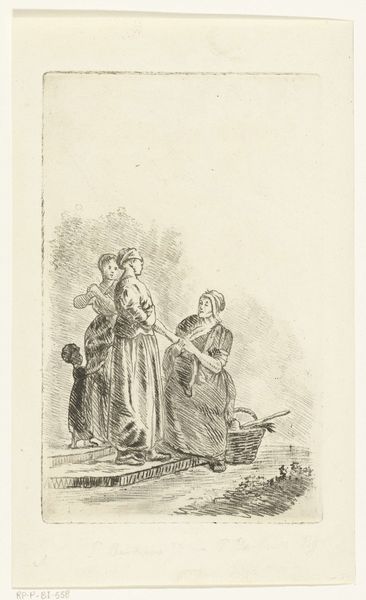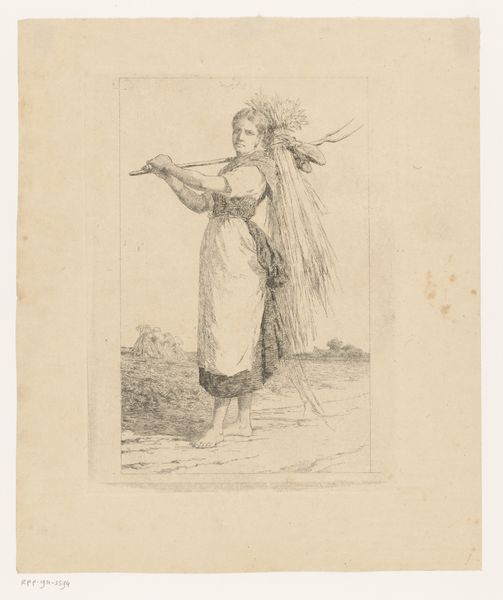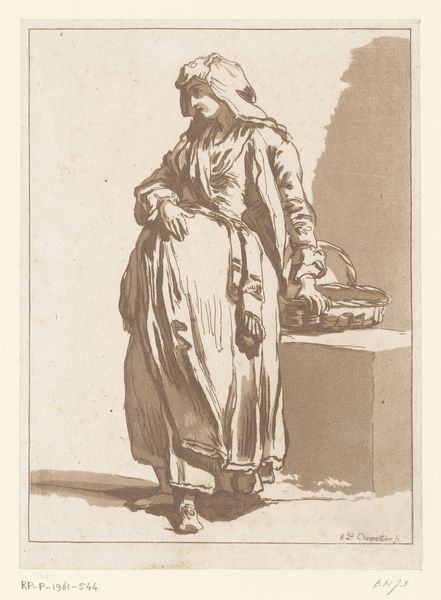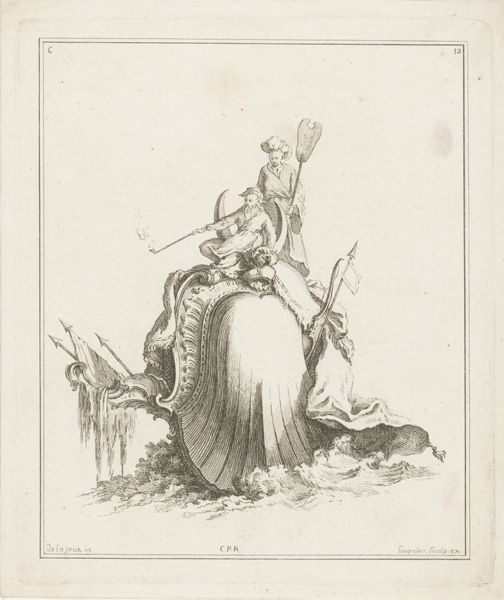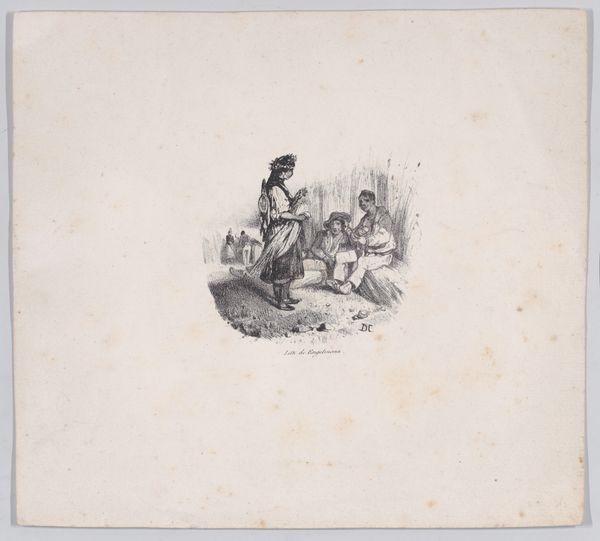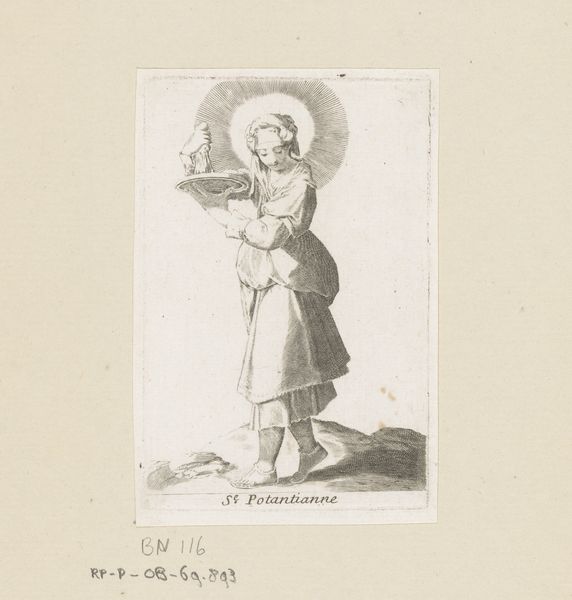
En siddende kvindefigur, allegori på visdom eller videnskab 1743 - 1809
0:00
0:00
drawing, paper, ink
#
portrait
#
drawing
#
neoclacissism
#
allegory
#
figuration
#
paper
#
ink
Dimensions: 175 mm (height) x 148 mm (width) (bladmaal)
Editor: Here we have Nicolai Abildgaard’s ink drawing "A Seated Female Figure, Allegory of Wisdom or Science," likely created between 1743 and 1809. There’s a striking serenity to it, and I'm drawn to the woman's contemplative pose. How do you interpret this work? Curator: The allegory is key. Consider how Neoclassicism was used to evoke particular sociopolitical contexts, to connect ideas of enlightenment to earlier, classical traditions. This "wisdom," figured as a woman, can then also evoke how the enlightenment project considered and often excluded women, framing the scope of reason through an implicitly masculine lens. Editor: That’s fascinating. So, her very representation raises questions about the inclusivity of knowledge? Curator: Precisely. Look at the telescope, a symbol of scientific pursuit, beside her. How might the act of *observing*, of seeking rational "truth", itself be implicated in constructions of power, gender, even empire during that period? Consider the role of the artist too—how is he contributing to these allegories of wisdom and the role of women? Editor: The inclusion of the telescope really contextualizes it in that time of exploration and scientific advancement. I hadn't considered the male gaze implicit in even allegorical figures. Curator: Exactly. It urges us to critically examine these seemingly neutral representations. What does it mean to allegorize abstract concepts like ‘wisdom’ or ‘science,’ and whose perspectives are prioritized in the process? How does this legacy endure in contemporary portrayals of knowledge and power? Editor: I now see how the seemingly simple drawing is packed with loaded symbolism of that time, that can still be debated today. Curator: Absolutely, this approach allows us to actively participate in a dialogue with history rather than being passive observers.
Comments
No comments
Be the first to comment and join the conversation on the ultimate creative platform.
